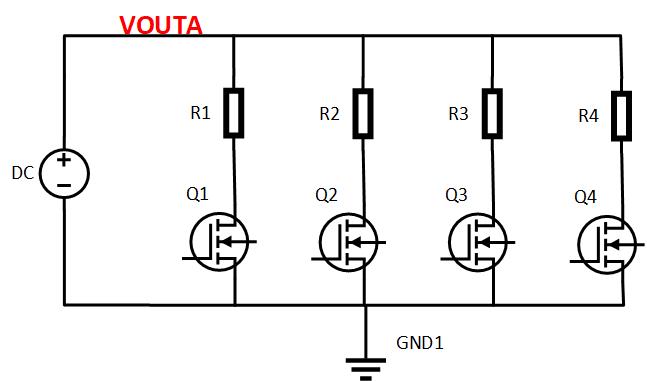SLUUCF8 March 2021 TPS53676
4.3 On-board load transient
The EVM board includes a load transient test. There are four parallel loads connected for RAILA as shown in Figure 4-4. Each load can be turned on and off independently with switch S3. Jumper J14 provides the drive signal from the onboard 555 timer (approximately 1.2 kHz, and 8% duty cycle) or to inject a drive signal on TP13 from a signal generator. The 0.2-Ω resistor is size 2502 and specifies a maximum power dissipation of 2 W. Ensure the external signal duty cycle does not exceed 20% duty cycle as thermal rating. Each load resistance (R1) is 11.7 mΩ and the switch on-resistance (RDS(on)) is 2 mΩ. Total resistance per load bank is 13.7 mΩ. The total resistance value with all four load banks is approximately 3.8 mΩ including board parasitic. If the RAILA output voltage is 0.88 V, load step is 230 A(0.88/3.8m)
 Figure 4-4 On Board Load transient
Figure 4-4 On Board Load transient